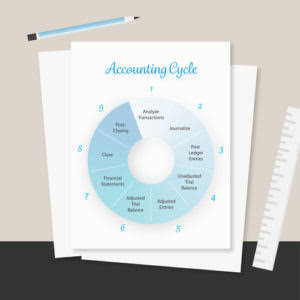
For example, if a company generates revenue in one accounting period but doesn’t write off a bad debt until a later period, it would appear that the company had higher profits in the earlier period than it actually did. Modern bookkeeping services go beyond basic record-keeping, offering CFO-level insights that help businesses improve cash flow, optimize expenses, and make data-driven financial decisions. Strategic bookkeepers provide real-time financial intelligence, track key performance indicators (KPIs), and ensure businesses remain audit-ready and investor-friendly. By leveraging advanced bookkeeping services, businesses can enhance profitability, improve budgeting, and navigate tax compliance with greater confidence—all without hiring a full-time CFO. The Direct Write Off Method provides accurate reporting of the business’s financial situation, including uncollectible debts and bad debts.
Related AccountingTools Courses
- It is particularly beneficial for larger companies or those with significant amounts of credit sales, where the predictability of cash flows is a concern.
- If the customer’s balance is written off as uncollectible, there is nothing to apply the payment against.
- This is because the allowance method follows the matching principle and complies with accounting standards such as GAAP.
- The main differences between the two methods are related to timing and the adherence to the matching principle in accounting.
- If this estimate is miscalculated, it may lead to material errors distorting the true and financial view of financial statements.
- The bad debt expense is typically calculated as a percentage of the total accounts receivable, and it is recorded as an expense on the income statement.
When a bad debt is written off, the immediate effect is a reduction in accounts receivable, which can lower the total assets on the balance sheet. This reduction reflects the diminished expectation of future cash inflows due to uncollectible debts. It can lead to fluctuations in reported income, as bad debt expenses are recognized irregularly.
- The firm then debits the Bad Debts Expenses for $ 5,000 and credits the Accounts Receivables for $ 5,000.
- These examples shall give us a practical overview of the concept and its intricacies.
- Most of the time, the allowance method is better than the direct write-off method for keeping track of bad debts.
- Reporting implications involve the transparency and accuracy of financial statements, as well as the potential impact on stakeholders’ perception and decision-making.
- It estimates uncollectible accounts at the end of each accounting period, creating a reserve or allowance for doubtful accounts.
AUD CPA Practice Questions: Reporting Requirements Under GAGAS
This method is considered more accurate and reliable than the Direct Write Off Method. This can hinder the accuracy and effectiveness of financial reporting and decision-making. The method aims to accurately report the estimated portion of accounts receivable that may become uncollectible. This is essential for representing a more realistic financial position of a company and adhering to the matching principle. This method involves recording the bad debt expense only when a specific account receivable is identified as uncollectible.
Everything to Run Your Business
Also, it’s important to note that the direct write-off method can still be useful in some cases, like when a company has a small number of accounts and can easily tell which ones are unlikely to be paid. In these cases, the direct write-off method can be simpler and less time-consuming than the allowance method. This lets companies see how uncertain it is to get paid on their accounts receivable and gives a more accurate picture of their financial situation. The direct write-off method is easy to understand and doesn’t require a lot of paperwork, so it’s a good choice https://www.bookstime.com/articles/how-to-calculate-accrued-vacation-pay for these businesses.

The allowance method lets companies estimate bad debts based on what has happened in the past and change the estimate as needed. This takes into account how uncertain it is to collect on accounts receivable. The direct write-off method in accounting is based on the revenue recognition principle, which says that income should be recorded in the accounting books when earned. The revenue recognition principle says that when a debt can’t be paid back, the amount should be removed from the accounts receivable balance. The direct write-off approach credits the same amount to accounts receivable and debits a bad debt account for the uncollectible amount in order to maintain the accuracy of the company’s books.
Corporate and Business Entity Forms
- Timing plays a significant role in this method, as the expense is recorded only upon confirmation of non-payment.
- Accurate and timely recognition of bad debts is essential for maintaining financial health and providing stakeholders with reliable financial information.
- Otherwise, you’ll have to go back through your records again to come up with the number.
- If you answered yes to any of these, the direct write-off method probably isn’t the best fit for you.
- The alternative to the direct write off method is to create a provision for bad debts in the same period that you recognize revenue, which is based upon an estimate of what bad debts will be.
You then debit the estimated amount from the account Bad Debts Expense and credited to an account called Allowance for Doubtful Accounts. This is a contra asset account that lessens your Accounts Receivable, and can also be called a Bad Debt Reserve. Bad debt expense is calculated as a percentage of the total accounts receivable, based on historical data, industry trends, and the company’s credit policies.
- The amount of the bad debt is accounted for in the time period when it is determined that the amount is uncollectible under the direct write-off method.
- While both allowance and direct write-off methods are used to write off bad debt in the accounting books of a company, the former is considered to be more accurate.
- By comprehending the nuances of the direct write-off method, businesses can make informed decisions about their accounting practices and maintain better control over their financial health.
- To keep the business’s books accurate, the direct write-off method debits a bad debt account for the uncollectible amount and credits that same amount to accounts receivable.
- The origins of the direct write-off method can be traced back to the early days of accounting when businesses used various methods to account for bad debts and uncollectible accounts.
- While it offers ease of use and immediate recognition of uncollectible amounts, it does not comply with GAAP due to its violation of the matching principle.
Customer Stories
Accounting methods can be complex and confusing, especially when it comes to handling bad debts. Two common approaches for dealing with uncollectible accounts are the Direct Write-Off Method and the Allowance Method. Hence, the sales amount remains intact, account receivables are eliminated and the bad debt expense account increases. The balance sheet will reflect greater revenue than was earned, which is against GAAP rules. This is why GAAP prohibits financial reporting using the direct write-off approach. When preparing financial statements, the allowance technique must be employed.

Direct Write-Off Method Vs. Allowance Method
The sale occurred December 1st 2015 and has payment due in 60days, so at year end ledger account December 31st 2015 the account is not yet due. Since the unadjusted balance is $9,000, we need to record bad debt of $5,360. The entry from December 31 would be added to that balance, making the adjusted balance $60,500. The percentage of sales method does not factor in the existing balance in Allowance for Doubtful Accounts. Without careful monitoring, the balance in the account could grow indefinitely. It is important for management to monitor the balance to ensure the balance is reasonable.

Journal Entry for Direct Write-Off
To record the bad debt, which is an adjusting entry, debit Bad Debt Expense and credit Allowance for Doubtful Accounts. When a customer is identified as uncollectible, we would credit Accounts Receivable. We direct write off method cannot debit bad debt because we have already recorded bad debt to cover the percentage of sales that would go bad, including this sale.
